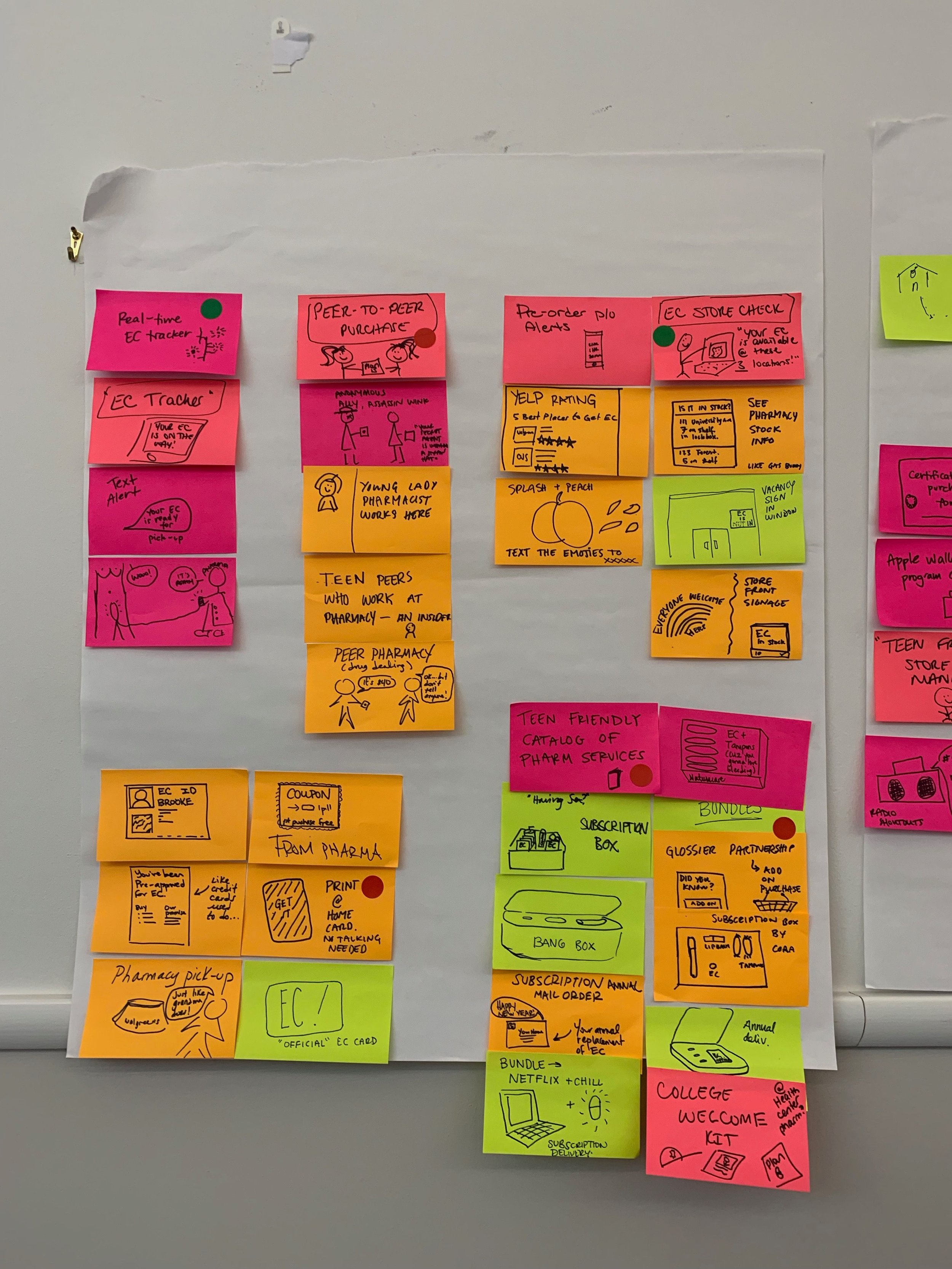How might we make pharmacies more teen-friendly spaces where young people are better able to access emergency contraception?
After receiving IDEO’s human-centered design training through the Innovation Next program, I spent a year using participatory design methods and co-creating with young people to understand and address the barriers to emergency contraception among teens in Seattle. Big shout-out to my teammates — Lyndsey Benson, Kyle Witt, and Jenny Arnold — as well as the IDEO and Power to Decide staff that supported our work throughout this journey.
Here’s a bit about our design thinking process, but for more detail on the project, visit missmorningafter.com.
Empathize 🧏♂️
We talked to more than 10 teens about their own experiences with emergency contraception, and reproductive health / bodily autonomy more broadly, in order to understand their barriers, fears, and concerns around Plan B.
We also talked to pharmacists, pharmacy techs, and other pharmacy staff about emergency contraception in order to understand their perspectives.
Define the Problem ✍️
Based on the information we gathered from talking to young people and pharmacy staff, we defined our problem more concretely: Our job was not to make pharmacies more teen-friendly (as we had originally thought), but to make pharmacies more EC-friendly. Everybody—teens and adults—need us to normalize emergency contraception.
We also realized that we wanted to help reframe the narrative — shifting Plan B from being this scary and shameful thing, to just a part of having really good sex. An act of self-love.
Ideation💡
Based on this, we starting ideating and generating ideas that would help address the problem at hand.
Prototype & Test 🔨
We then produced a number of inexpensive, scaled down versions of the products that would make pharmacies more EC-friendly. We tested these products with our teens, as well as the pharmacy staff.
Outcome ✨
These insights informed the creation of Miss Morning After, a toolkit to expand access to emergency contraception in pharmacies.
The kits included:
Signs and stickers to increase store-wide visibility of emergency contraception to help people find and feel comfortable buying EC.
Cards and tear-offs in the reproductive health aisle that let customers know that they can purchase the pill with cashiers at the front or pharmacists in the back — wherever they feel most comfortable. And an assurance that they would be met with support, rather than judgment, from store staff.
Informational bag inserts that would be placed in the bag when a customer bought Plan B to explain how the morning after pill works in the body and potential side effects to anticipate.
Buttons for staff to wear to signal that pharmacists and other store staff are approachable and can be a resource to them.








